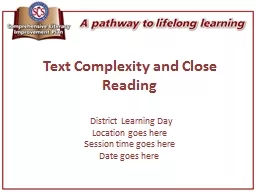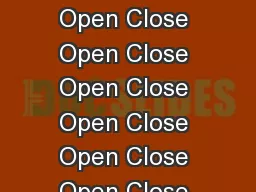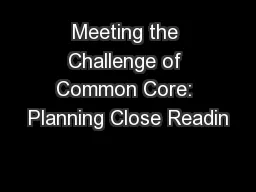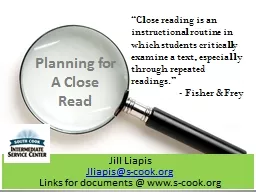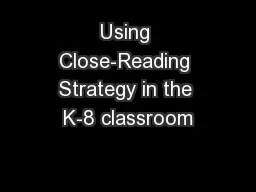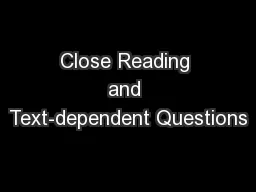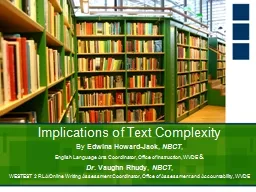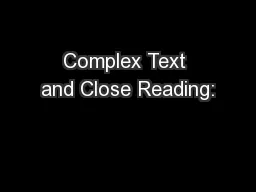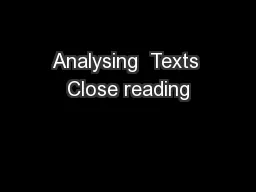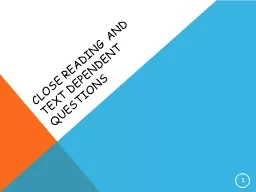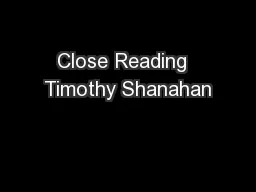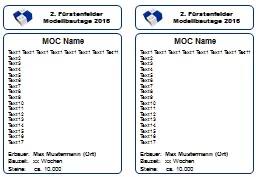PPT-Text Complexity and Close Reading
Author : min-jolicoeur | Published Date : 2019-06-29
District Learning Day Location goes here Session time goes here Date goes here Do Now Underline the major points Use a question mark for keywords or phrases
Presentation Embed Code
Download Presentation
Download Presentation The PPT/PDF document "Text Complexity and Close Reading" is the property of its rightful owner. Permission is granted to download and print the materials on this website for personal, non-commercial use only, and to display it on your personal computer provided you do not modify the materials and that you retain all copyright notices contained in the materials. By downloading content from our website, you accept the terms of this agreement.
Text Complexity and Close Reading: Transcript
Download Rules Of Document
"Text Complexity and Close Reading"The content belongs to its owner. You may download and print it for personal use, without modification, and keep all copyright notices. By downloading, you agree to these terms.
Related Documents

